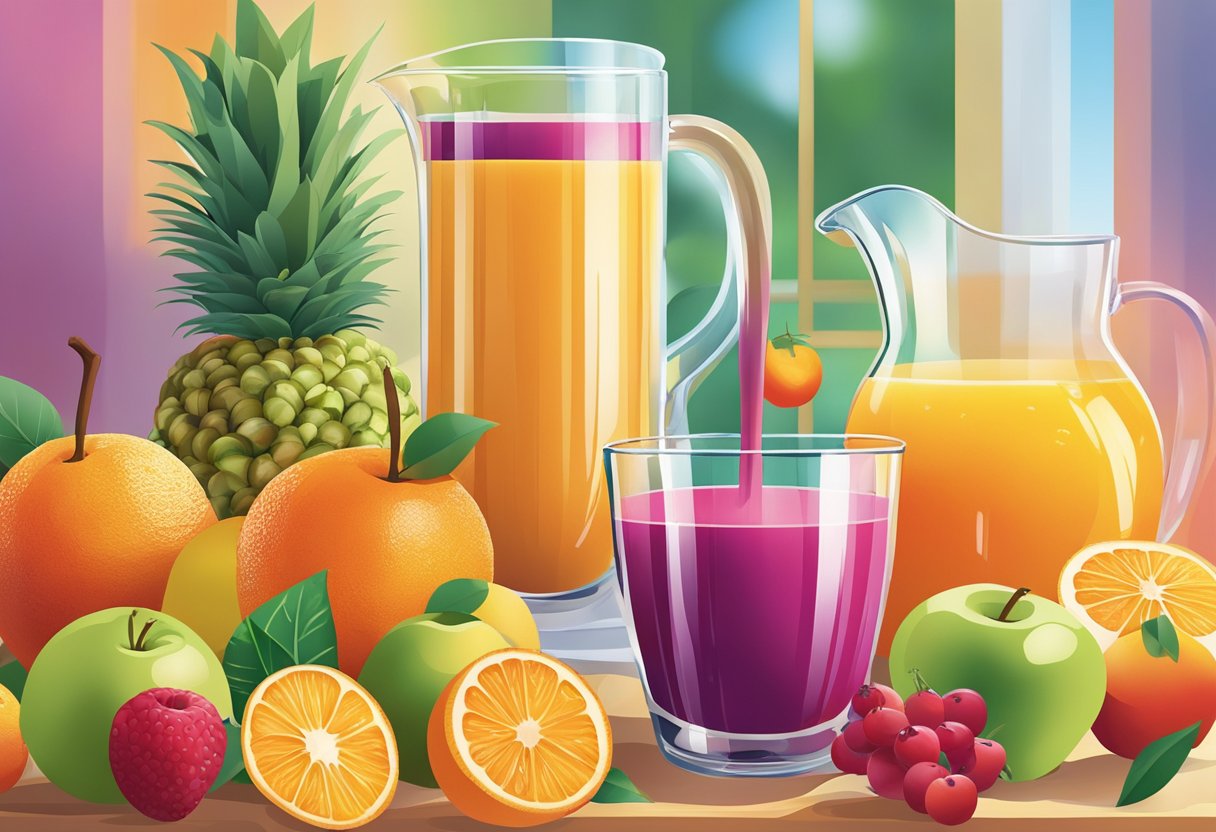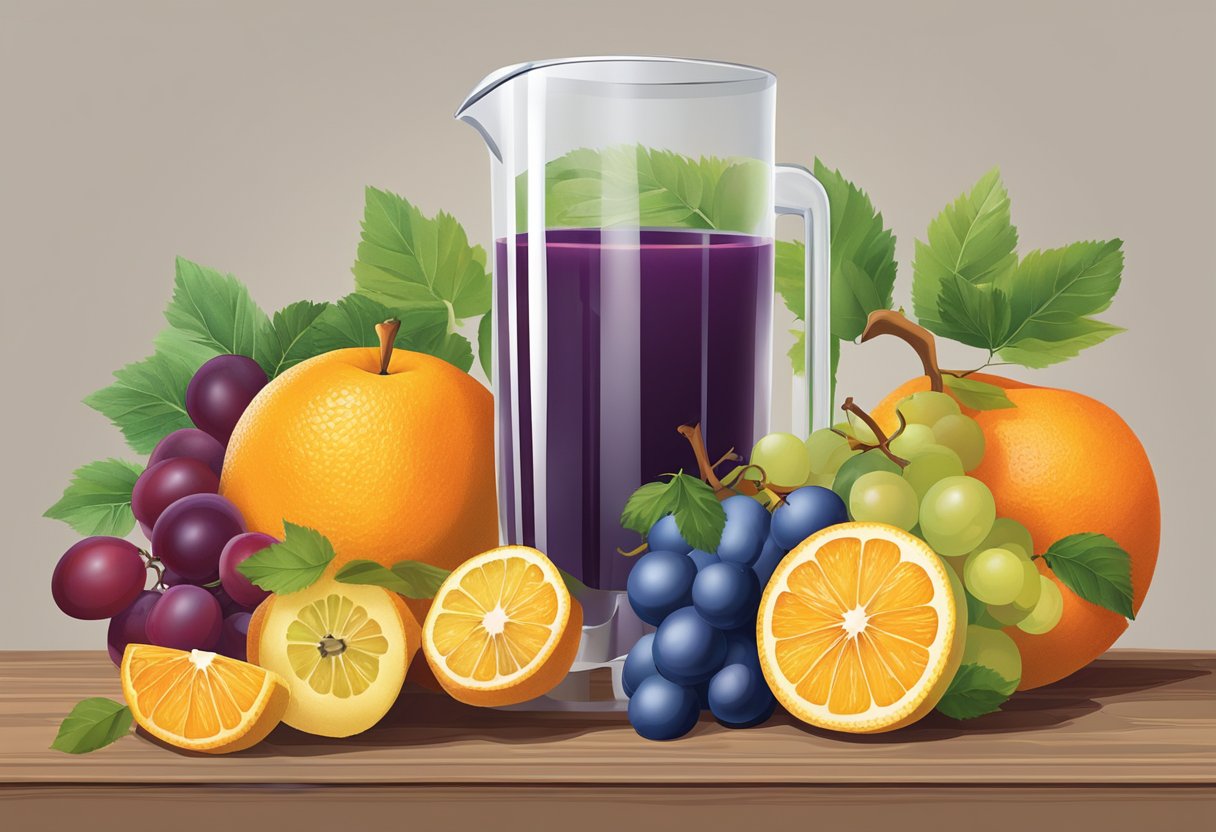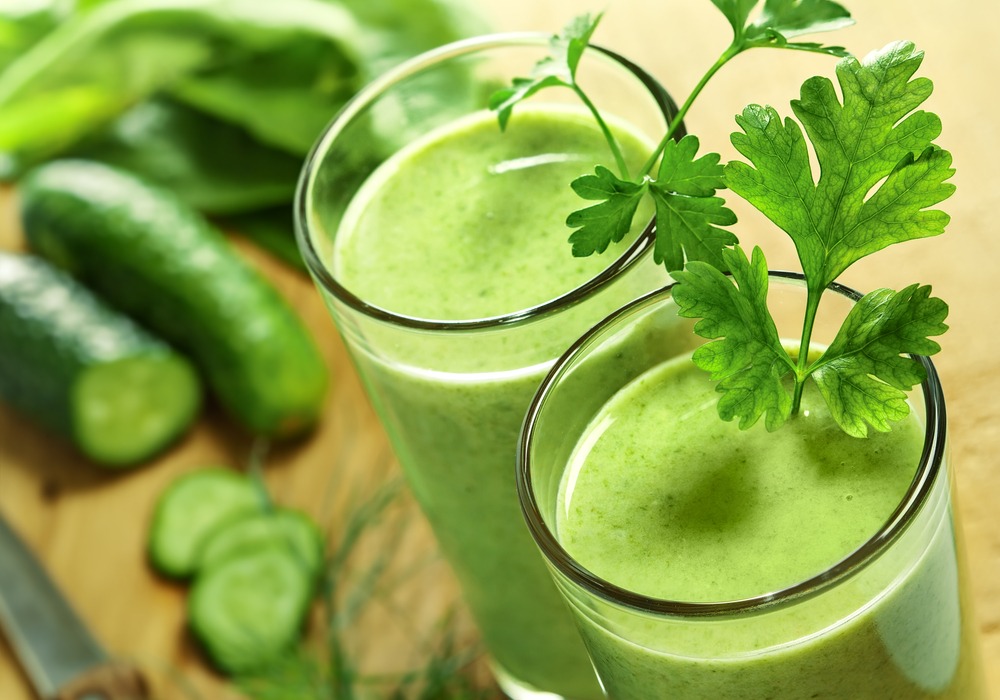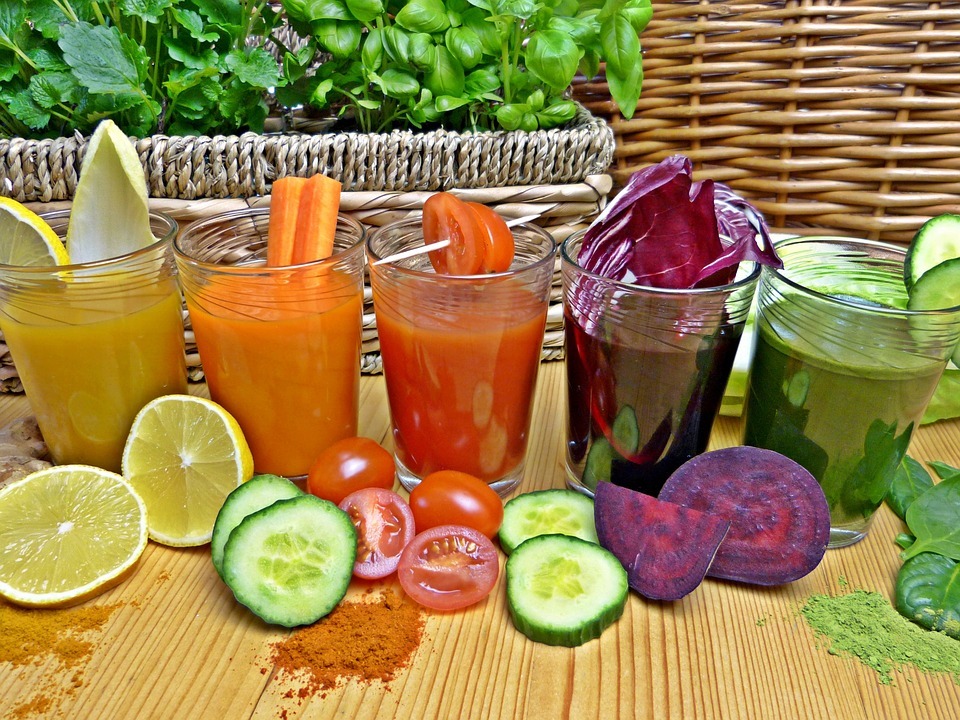Vitamins in Juice: Essential Nutrients for Your Daily Drink
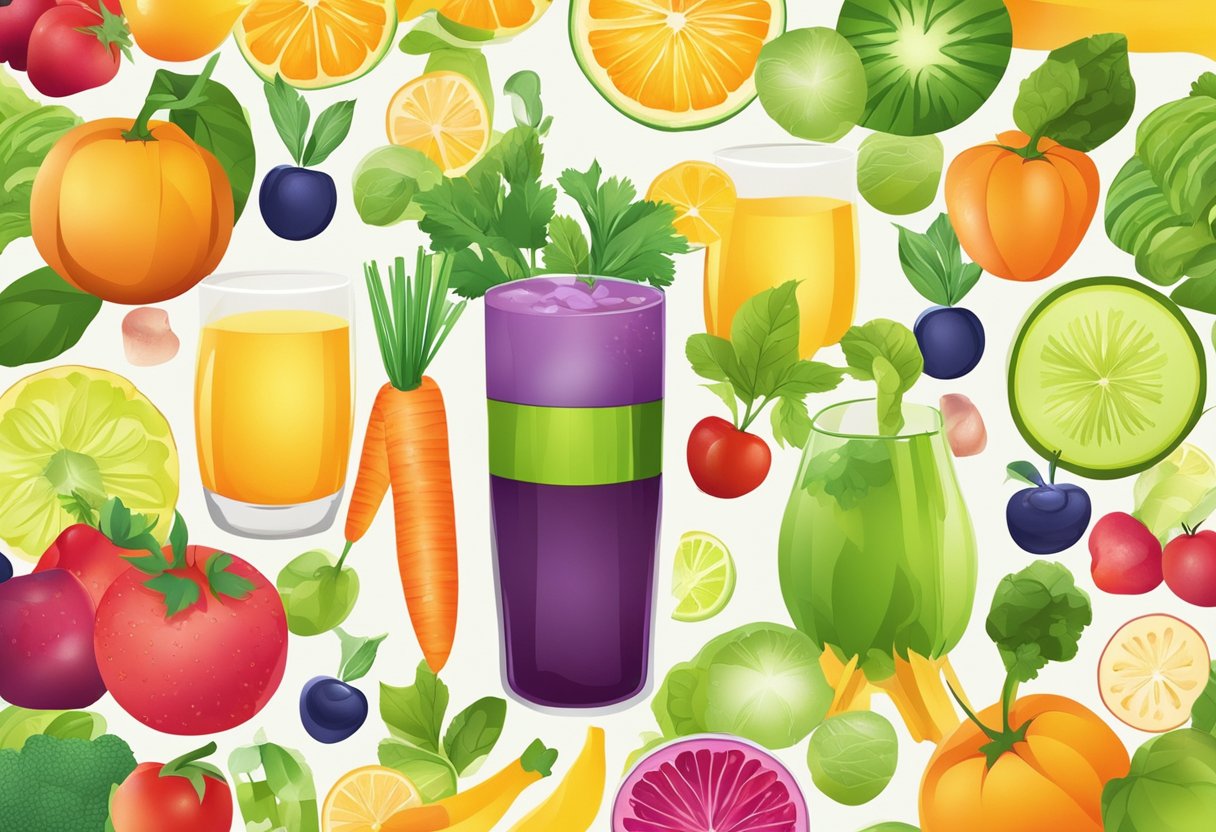
Juice offers a tasty way to get vitamins and nutrients into your diet. Many people enjoy fruit and vegetable juices as part of a healthy lifestyle. Drinking juice can provide important vitamins like vitamin C, folate, and vitamin A.
Not all juices are equal when it comes to nutrition. Orange juice is a popular choice that packs a lot of vitamin C. One cup gives you all the vitamin C you need for a day. Other juices like cranberry and tomato also offer health perks.
Juicing at home lets you mix different fruits and veggies to make unique blends. This can help you eat a wider range of produce. Store-bought juices work too, but check labels to avoid added sugars. Picking the right juices can boost your intake of key vitamins and plant nutrients.
Understanding Juice: Types and Processing
Juice comes in many varieties, from pure fruit juices to vegetable blends. The processing methods used affect the nutritional content and shelf life of juices.
Fruit Juice vs. Vegetable Juice
Fruit juices are made from the liquid extracted from fruits. They tend to be sweeter and higher in natural sugars. Common fruit juices include apple, orange, and grape.
Vegetable juices come from pressed vegetables. They are often less sweet and lower in calories than fruit juices. Popular options are tomato, carrot, and mixed vegetable juices.
Both types offer vitamins and minerals, but in different amounts. Fruit juices usually have more vitamin C, while vegetable juices may be higher in vitamins A and K.
100% Juice and Blending Methods
100% juice contains only the liquid from fruits or vegetables with no added sugars or preservatives. It can be made through pressing or blending.
Pressed juice is made by crushing fruits or vegetables to extract the liquid. This method often removes pulp and fiber.
Blended juice keeps the whole fruit or vegetable, including the pulp. This method retains more fiber and nutrients. Cloudy apple juice is an example of a blended juice with more health benefits than its clear counterpart.
The Role of Pasteurization
Pasteurization is a heating process that kills harmful bacteria in juice. This makes the juice safer to drink and extends its shelf life.
The process can slightly reduce some vitamins, like vitamin C. But it also makes certain nutrients easier for the body to use.
Most store-bought juices are pasteurized for safety. Fresh-squeezed juices at home or some juice bars may not be pasteurized. These should be consumed quickly to avoid spoilage.
Nutritional Profile of Juice
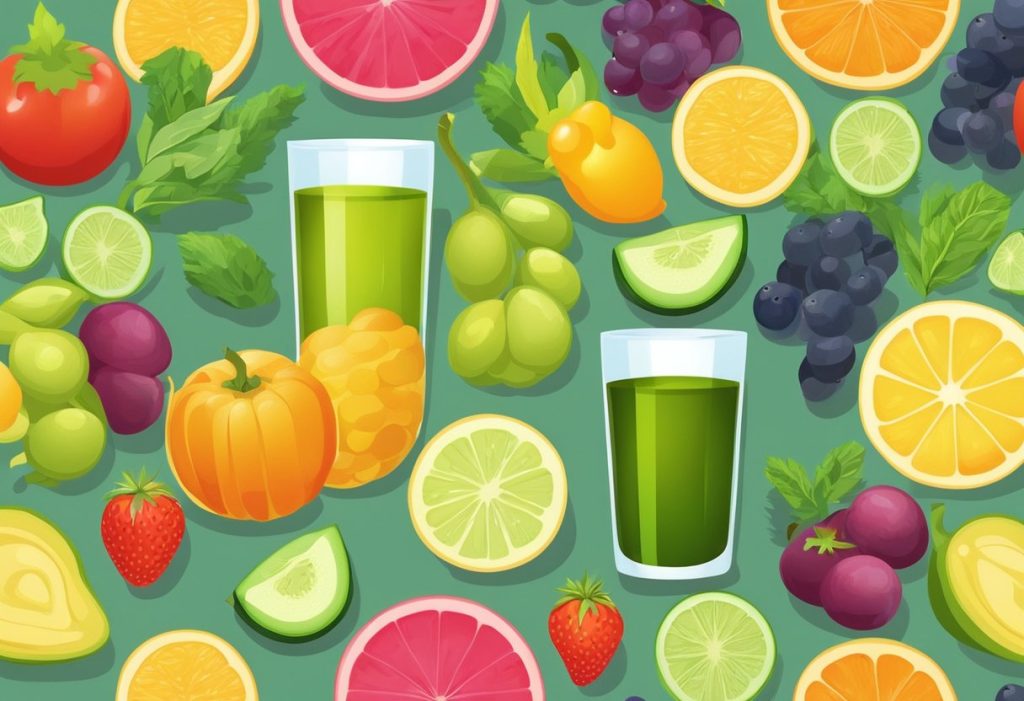
Fruit juices offer a mix of vitamins, minerals, and sugar. The exact makeup varies based on the fruit type and processing method. Let's look at the key parts of juice nutrition.
Vitamin and Mineral Content
Many juices are rich in vitamin C. Orange juice is a top source, with one cup giving about 93% of the daily value. Apple and grape juices have less, but still offer some vitamin C. Some juices also have B vitamins and vitamin A.
Juices can be good sources of minerals too. Many have potassium, which helps control blood pressure. One cup of orange juice has about 11% of the daily potassium need. Some juices also contain small amounts of calcium, magnesium, and iron.
Fruit juices often lack sodium. This makes them a good choice for people watching their salt intake.
Sugar and Calories: A Balanced View
Fruit juices are high in natural sugars. A cup of apple juice has about 24 grams of sugar. Orange juice has slightly less at 21 grams per cup. These sugars add calories to juice.
A cup of apple juice has about 114 calories. Orange juice is similar with 112 calories per cup. Most of these calories come from carbs in the form of sugar.
Some juices have added sugar. This can boost the calorie count even more. It's smart to check labels for added sugars when picking juices.
Fiber and Pulp Considerations
Most juices have little to no fiber. The juicing process often removes the pulp, which holds most of the fiber. A cup of orange juice with pulp has about 0.5 grams of fiber. Juice without pulp has even less.
Whole fruits have much more fiber than juice. An orange has about 3 grams of fiber. Eating whole fruit gives you this fiber plus the vitamins and minerals.
Some brands now offer high-pulp juices. These may have a bit more fiber than regular juice. But they still fall short of whole fruits in fiber content.
Health Benefits of Juice
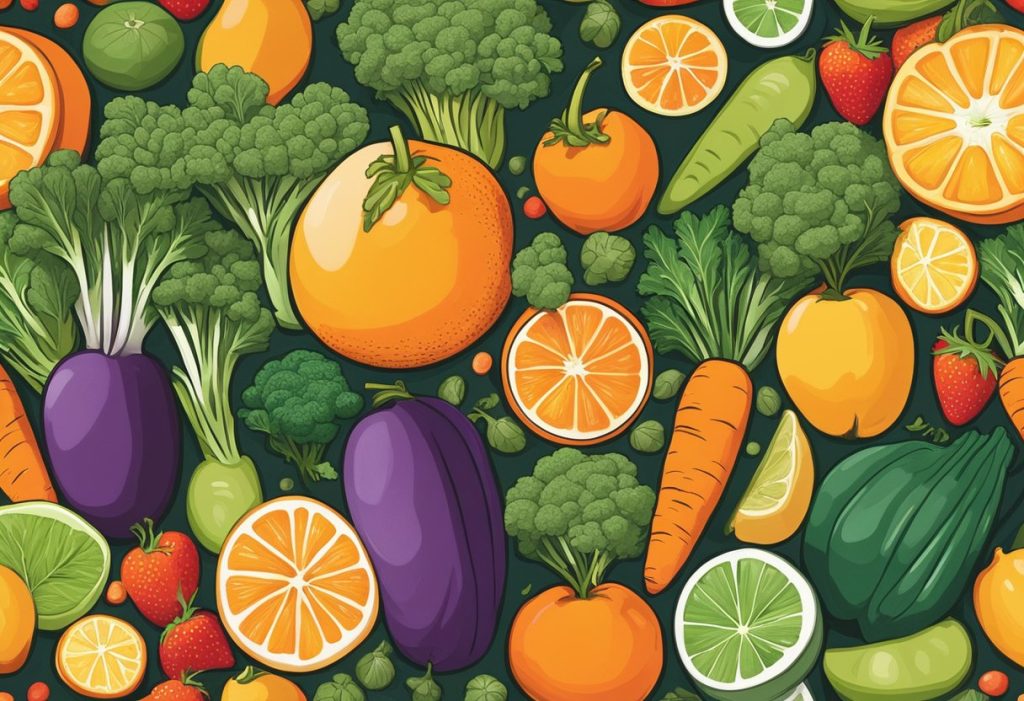
Fruit juices offer many health benefits due to their vitamin and nutrient content. They can boost the immune system, fight disease, and support overall wellness.
Vitamins and Body Function
Juices provide essential vitamins that keep the body working properly. Orange juice is high in vitamin C, which helps the immune system. One cup gives all the vitamin C needed for a day. Many juices also contain folate, important for making red blood cells.
Vitamin A in juices like carrot helps eyesight and skin health. Some juices have vitamin K, needed for blood clotting. The vitamins in juice support many body functions and help prevent deficiencies.
Antioxidants and Chronic Disease Prevention
Fruit juices are packed with antioxidants that fight harmful free radicals in the body. These include polyphenols, flavonoids, and anthocyanins. Blueberry juice is very high in anthocyanins, giving it a deep purple color.
Antioxidants in juice may help lower the risk of heart disease, high blood pressure, and other chronic illnesses. They reduce inflammation in the body. Tart cherry juice is known for its anti-inflammatory effects.
Hydration and Digestive Health
Juices are mostly water, making them great for staying hydrated. Apple juice is 88% water. Proper hydration aids digestion and keeps the body running smoothly.
Many juices contain fiber, which supports digestive health. Fiber helps prevent constipation and feeds good gut bacteria. Prune juice is often used to improve digestion.
The natural sugars and acids in juice can also stimulate digestion. Citrus juices may boost the production of digestive enzymes.
Considering Juice in a Healthy Diet
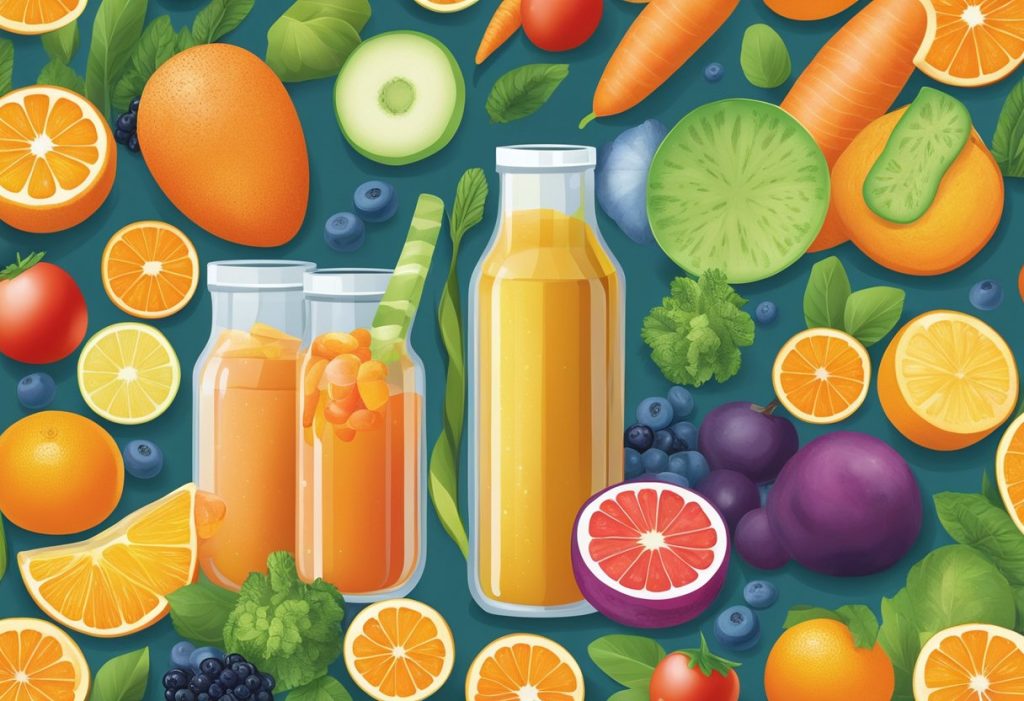
Juice can be part of a balanced diet when consumed mindfully. It provides vitamins and minerals but lacks fiber found in whole fruits and vegetables. Proper portion sizes and awareness of sugar content are key.
Weight Management and Juice Intake
Juice calories can add up quickly. A single 8-ounce glass of fruit juice often contains over 100 calories. This can lead to weight gain if not accounted for in daily calorie intake.
Whole fruits are more filling than juice. The fiber helps slow digestion and provides a sense of fullness. This can aid in weight control.
For weight management, it's best to limit juice to small portions. A 4-ounce serving is a good starting point. Pairing juice with a protein source can help balance blood sugar and increase satiety.
Managing Blood Sugar and Diabetes
Juice can cause rapid spikes in blood sugar. This is because the natural sugars in juice are absorbed quickly without fiber to slow them down.
People with diabetes should be extra careful with juice intake. It's often recommended to limit juice or avoid it altogether. When consumed, it should be in small amounts with a meal.
Vegetable juices tend to have less sugar than fruit juices. They can be a better choice for those watching their blood sugar. Mixing vegetables with fruits can also lower the overall sugar content.
Nutrition Advice from Dietitians
Dietitians often suggest eating whole produce over drinking juice. Whole fruits and vegetables provide more fiber and nutrients.
When choosing juices, look for 100% fruit or vegetable options without added sugars. Check serving sizes on labels, as they can be misleading.
Some dietitians recommend diluting juice with water. This reduces sugar and calorie content while still providing flavor.
For those who enjoy juice, moderation is key. Aim for no more than 4-8 ounces per day as part of a balanced diet. This allows for the benefits of juice without overdoing sugar or calories.
Potential Adverse Effects and Considerations
Juice consumption has some potential drawbacks to be aware of. While juices provide vitamins and nutrients, they can also pose health risks if consumed excessively or improperly.
Sugar Content and Health Risks
Most fruit juices contain high amounts of natural sugars. A 12-ounce serving of apple juice has about 39 grams of sugar. Orange juice contains around 33 grams per serving. These sugars can add up quickly.
Too much sugar intake is linked to:
• Weight gain • Tooth decay • Increased diabetes risk
Fructose, the main sugar in fruit juice, may raise cholesterol levels when consumed in large amounts. Some studies tie high juice intake to an elevated stroke risk.
The Department of Agriculture recommends limiting juice to small portions. Whole fruits are generally a healthier choice, as they contain fiber that slows sugar absorption.
Food-Borne Illness and Safety
Unpasteurized juices can harbor harmful bacteria like E. coli or Salmonella. These pathogens may cause serious illness, especially in young children, older adults, and those with weakened immune systems.
To reduce risks:
• Choose pasteurized juices • Wash produce thoroughly before juicing at home • Refrigerate homemade juice and drink within 1-2 days
Store-bought juices must be pasteurized or carry a warning label by law. But fresh-squeezed juices at juice bars or farmers markets may not be pasteurized.
Juice Consumption Recommendations
The American Academy of Pediatrics suggests:
• No juice for babies under 1 year old • 4 oz or less daily for ages 1-3 • 4-6 oz daily for ages 4-6 • 8 oz or less daily for ages 7+
Adults should limit juice to 4-8 oz per day as part of a balanced diet. Watering down juice can reduce sugar content. Eating whole fruits and vegetables is ideal for getting fiber and nutrients without excess sugar.
People with diabetes or weight concerns may need to further restrict juice intake. Talking to a doctor or nutritionist can help determine appropriate amounts.
Choosing and Storing Juice
Picking the right juice and keeping it fresh are key steps for getting the most nutrition. Proper selection and storage help maintain flavor and vitamin content.
Selecting Quality Juice Varieties
Look for 100% fruit or vegetable juices with no added sugars. Orange, apple, and grape juices are common choices. For more nutrients, try pomegranate, beet, or prune juice. Cranberry juice offers urinary health benefits. Tomato juice packs vitamin C and lycopene.
Check labels for pasteurization. This process kills harmful bacteria. Avoid juices with artificial colors or flavors. Cold-pressed juices keep more nutrients but have a shorter shelf life.
Some brands offer juice blends. These mix different fruits or add vegetables. They can boost nutrition and create new flavors.
Storing Juice: Bottles, Cans, and Cartons
Once opened, keep juice in the fridge. Use within 7-10 days for best quality. Sealed containers last longer. Check the "best by" date on unopened juice.
Glass bottles protect flavor best but can break. Plastic bottles are lighter but may affect taste over time. Cans block light and keep juice fresh longer. Cartons are easy to store but may not seal as well after opening.
Freezing works for most juices. Pour out a little first, as juice expands when frozen. Thaw in the fridge and shake well before drinking. Frozen juice lasts up to 8-12 months.
Juice and the Bigger Nutritional Picture
Juice plays a complex role in nutrition and health. It offers vitamins and minerals but lacks some benefits of whole fruits and vegetables. Let's explore how juice fits into a balanced diet.
Role of Juice in Overall Nutrient Intake
Juice can boost vitamin and mineral intake. Orange juice packs vitamin C and folate. Other juices offer different nutrients. Blueberry juice has antioxidants. Tart cherry juice contains iron and potassium.
But juice misses some key parts of whole produce. It has less fiber. It also lacks some vitamins found in fruit skins and pulp.
Juice calories add up fast. A cup of fruit juice has about the same calories as a whole fruit. But it's easier to drink more juice than eat whole fruits.
Fruit and Vegetable Consumption Patterns
Many people don't eat enough fruits and veggies. Juice can help fill this gap. It's quick and easy to drink.
But whole produce is still best. It has more fiber and nutrients. Eating whole fruits and veggies also helps you feel full longer.
Try to eat a mix of fruits and veggies each day. Include dark leafy greens like spinach and kale. Add colorful options like berries and citrus fruits.
Juice and Immune Function
Juice can support immune health. Many juices are rich in vitamin C. This vitamin helps your body fight off germs.
Other nutrients in juice also matter for immunity. These include vitamin A and zinc. Citrus juices are good sources of these.
Some juices have extra immune-boosting compounds. Blueberry juice has lots of antioxidants. These may help protect your cells.
But whole fruits and veggies are still key. They have more of these helpful compounds. Plus, they offer fiber that feeds good gut bacteria. This can also help your immune system.

